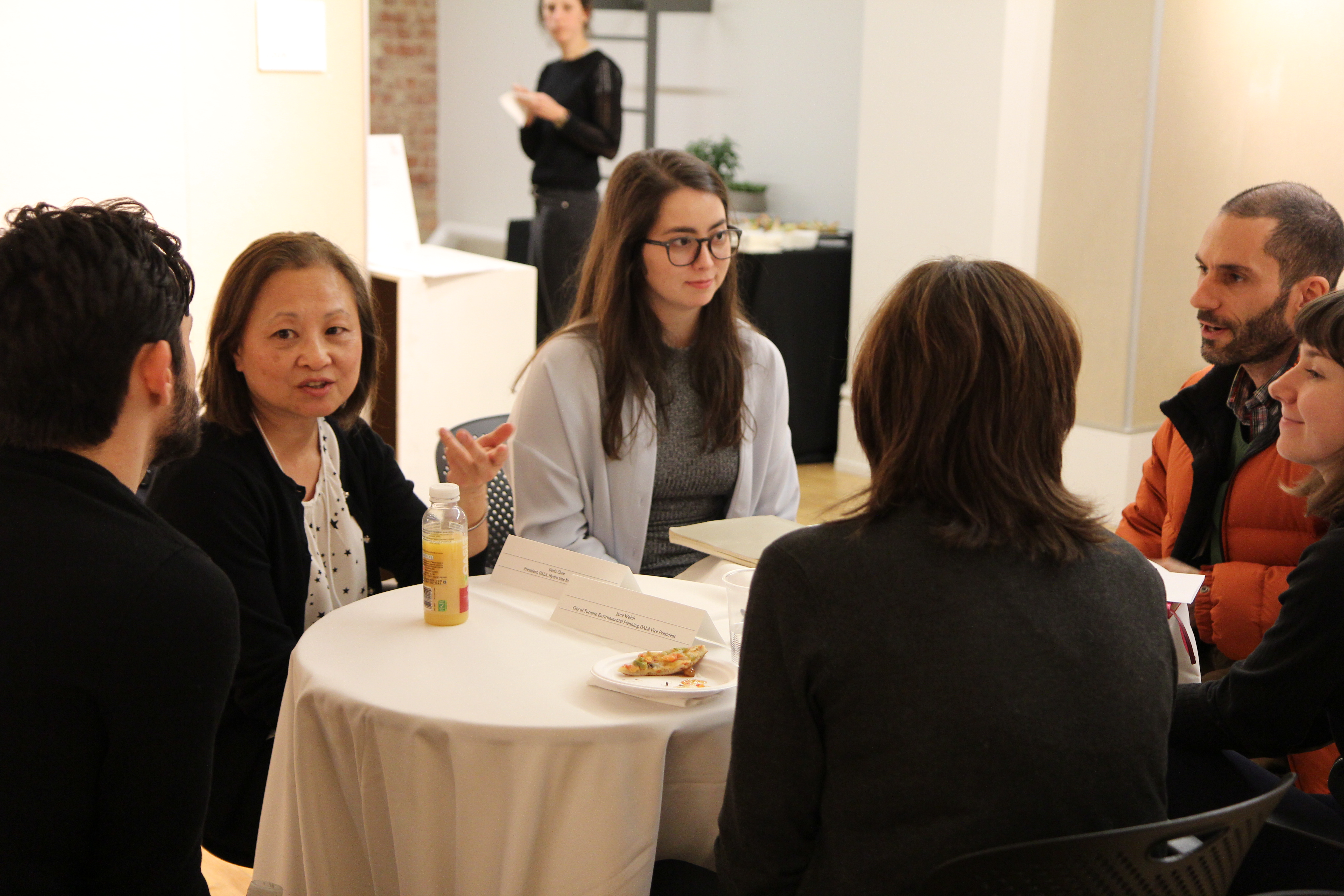11.03.18 - 8 tips for Master of Landscape Architecture students about to start their career
On February 27, students in the Daniels Faculty's Master of Landscape Architecture program met with professionals working in the field to learn more about life after graduation and gather tips on developing their future careers. This year's event, generously supported by the Ontario Association of Landscape Architects (OALA), was well attended, with 15 professionals, many of them Daniels Faculty alumni, joining students at One Spadina. Students rotated from table to table to meet with everyone who generously donated their time to provide insight and advice.
So what did they learn? We surveyed some of the students afterwards and collected 8 tips for Master of Landscape Architecture students about to start their career.

1. Not all firms are alike
Every firm is different. As a result, each has different criteria for the type of people they're looking to hire. Niloufar Eesfarjani learned about the importance of determining what makes each firm unique, so that you can "tailor your cover letter or resume to address what they are looking for."
2. Your dream job is out there! Find the firm that's right for you
"One of the professionals told me: don't be afraid to quit if you aren't having fun at work," said Carlos Portillo. "There will be something that is right for you," so don't waste your time at a place that isn't a good fit.

3. Career paths can vary
"There were so many differences in what people had done beforehand," noted Blake Creamer after meeting with the professionals. "Landscape architecture is so varied that you can find what you are really interested in and go for that, which is really nice."
4. Highlight what will make you stand out in the crowd
Many of the students who attended the event sought advice on how to create an eye-catching portfolio. But, as Cornell Campbell learned, firms receive so many, they can't look at them all. One piece of advice he received is to "create info sheets about your work and projects — a couple pages that they can easily browse through to get a sense of you and your work." You can show them your full portfolio when they invite you in.
Reesha Morar was interested to learn how similar many portfolios can be, given that recent graduates often include student work stemming from the same assignments. "Diversity is very good; they want to see different styles," she said. "Someone said they want to see sketch models, which a lot of us find are very messy or rough. A lot of elements that we don't realize are valuable, they see as valuable."

5. It's not just the skills you have but how you use them
Most of us know how to use photoshop and other programs, said Irene Wong, so listing these skills on your resume is not going to set you apart. It's how you put those skills to use that matters. Like Morar, she learned that showing your creative process can be helpful: "A lot of the professionals said that the wanted to see hand drawings and rough models."
6. Being a good salesperson leads to more creative work
Working in a firm often means having to please a client who may value the bottom line above all else. Alyssa Lagana learned that "you have to convince people of the value of your designs." Once you are able to do this, you can begin to make small changes to the project that match your creative vision.
7. Don’t be afraid to ask for what you want
"One thing I learned last year and this year is to be really forward. There are a ton of people here and you have to make yourself known in some way," said Emily McKenna, who landed a summer job last year thanks to a connection she made at this event. "Last year when I got my job, I just asked for it. I had a really lovely conversation with someone and felt really compelled by the work she was doing. So I just asked, and she happened to have a spot."
::::::::::::::::::::
Thanks to all the professionals who joined us for this event, including: Elyse Parker, City of Toronto; Claude Cormier, Claude Cormier + Associates; Bryce Miranda, DTAH; Doris Chee, Hydro One Networks Inc.; Caroline Cosco, Ontario Ministry of the Environment; Brett Hoornaert, The Planning Partnership; Scott A Torrance, Scott Torrance Landscape Architecture Inc; Shadi Gilani, Terraplan Landscape Architects; Lina Al-Dajani, The MBTW Group; Jane Welsh, City of Toronto Environmental Planning; Ken McGowan, Bioroof Systems; Darcie McIsaac, Terraplan Landscape Architects; Jana Joyce, The MBTW Group; Michael Cullen, Terraplan Landscape Architects; Kiran Chhiba, Dillon Consulting Limited.







